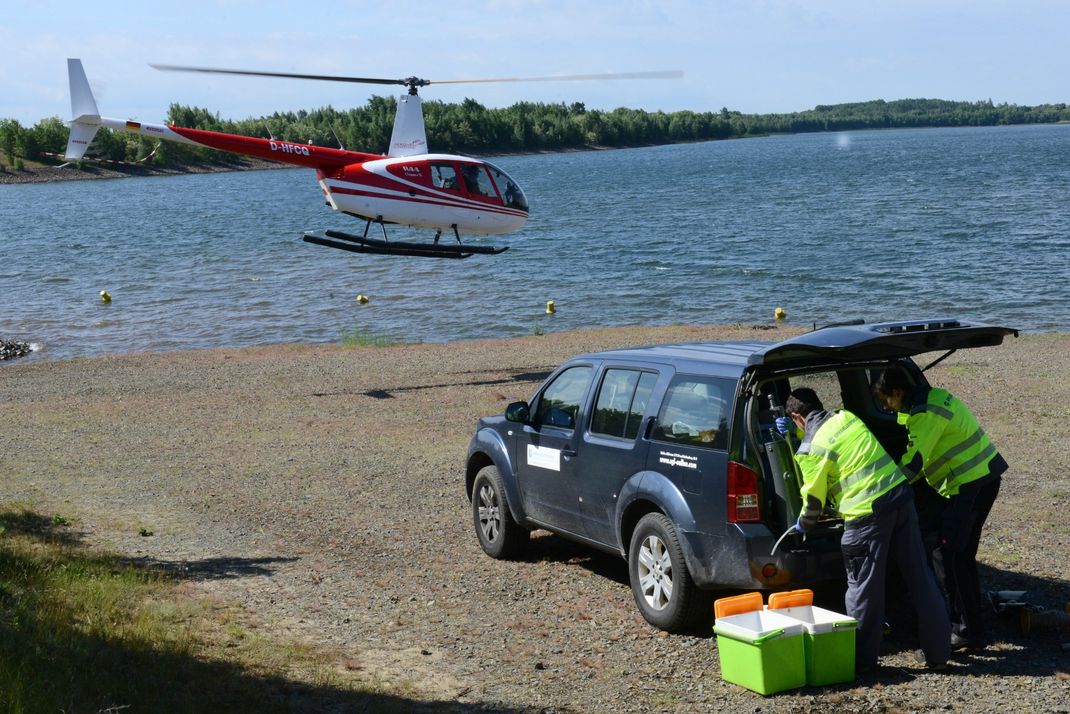Humans have long exploited the natural resources of the Lausitz, especially through lignite mining. This activity has significantly altered the landscape and caused considerable damage to biodiversity. However, as the population has become more environmentally aware, our treatment of nature has changed. Today, the region is being restored through targeted renaturation, such as converting former open-pit mines into lakes.
Driven by a strong desire for ecological restoration and based on legal requirements, including those imposed by the State Mining Authority, Europe's largest man-made lake landscape is currently being created in the Lausitz as part of a major ecological project. This development benefits both people and nature. People benefit from recreation, leisure activities and attractive living spaces, while nature flourishes thanks to the element of water. New habitats for plants and animals are being created, which has the potential to transform the region into a biodiversity hotspot.
Combating biodiversity loss is something this project contributes to in a significant way. It also sets an example for the responsible use of our natural resources.
Water – the source of life and it’s challenges
Although water is vital, it can also pose risks, especially when its quality is poor. Many of the newly created open-pit mining lakes in the Lausitz region were initially acidic and polluted. Therefore, careful monitoring and regulation are key parts of the renaturation process to achieve an ecologically acceptable quality that benefits flora, fauna and humans alike.
However, legacy pollution is not the only threat. Our modern lifestyle is also putting increasing pressure on our waterways. Chemicals from industry, agriculture and households, including pesticides such as glyphosate, cosmetic and pharmaceutical residues or PFAS (per- and polyfluoroalkyl substances), end up in rivers, lakes and ultimately groundwater through wastewater and waste.
PFAS present a particular problem because they are extremely persistent, accumulate in organisms and enter the human body through the food chain. They are considered highly dangerous in ecotoxicology because they can cause hormonal disorders, reproductive problems, an increased risk of cancer, weakened immunity or metabolic disorders.
Science in the service of people and nature
Continuous monitoring of water bodies is essential to ensure that the population and visitors can safely enjoy nature. This is precisely where SGL's limnological and analytical team plays a crucial role in society by systematically monitoring the chemical and biological quality of recreational water bodies and lakes affected by mining in the Lausitz region.
The SGL laboratory in Lübbenau/Spreewald analyzes drinking water, bathing water, wastewater and the development of residual pits during the renaturation process, among other things. This allows pollutants or potential contaminants to be detected at an early stage. Experienced specialists conduct evaluations that provide a sound basis for official decisions, such as approving water bodies for public use or initiating protective and remediation measures.
Water monitoring is becoming increasingly important, especially in the context of climate change. Changing precipitation patterns, rising temperatures and longer periods of drought are also altering the ecological balance of our inland waters. Toxic blue-green algae, invasive species or disease-causing microbes are becoming more prevalent and posing new challenges to water quality.
Relaxation surrounded by nature
Today, the lakes of the Lausitz are a place where people and nature can exist in harmony and flourish, whether in rivers, lakes, ponds or thermal springs. The region offers a wide range of leisure activities, including water sports, swimming, fishing and hiking, so there is something for everyone. Families, nature lovers along with active vacationers can discover a fascinating water world that invites them to linger, relax and explore. The Lausitz proves that nature-based solutions, nature conservation and renaturation, as well as quality of life, are not contradictory but rather enrich each other.


